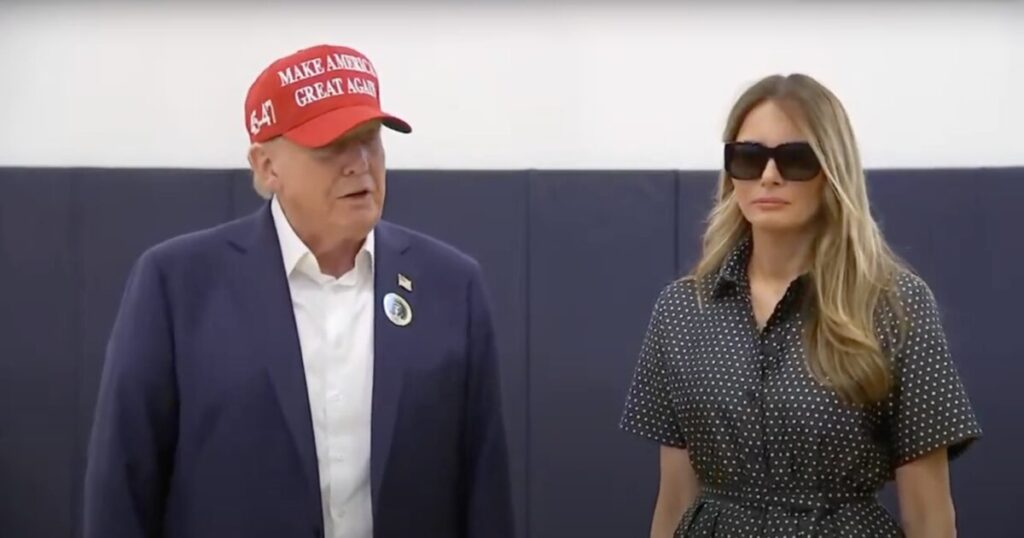On Election Day, former President Donald Trump confidently cast his vote in Palm Beach, Florida, alongside his wife, Melania Trump. With his signature red “Make America Great Again” hat and an unbuttoned collar exuding a relaxed demeanor, Trump made noteworthy comments to reporters highlighting his optimism about the election’s outcome. He proclaimed that this campaign was the best he had run out of his three presidential bids, elaborating on his belief that while he performed well in the first two elections, he felt his latest campaign was even more successful.
During the brief media interaction, Trump mentioned that there would be a gathering at Mar-a-Lago, where supporters would watch the election results unfold. He expressed gratitude for the enthusiastic turnout at his rallies, specifically noting the long lines of conservative voters—suggesting a high engagement level among Republican constituents. His comments reflected his acute awareness of the political landscape, as he noted the honor he felt from the robust participation, particularly observing that many had rallied behind him during the campaign’s final push through states like Michigan.
Trump’s upbeat sentiment was palpable as he indicated a strong lead for Republicans on Election Day, characterizing the turnout as a positive sign. He alluded to the energy he witnessed at his numerous rallies, suggesting it would translate into electoral success. His comments painted a picture of confidence, asserting that Republican voters were showing up in great numbers and implying that this would bode well for the party’s prospects in the election.
Nonetheless, Trump did express some concerns regarding the electoral process, particularly criticizing mail-in voting. He articulated worries about potential delays in certifying results in certain states, highlighting a stance he had taken during previous campaigns as well. These criticisms are part of a broader narrative Trump has fostered regarding election integrity, an issue that has polarized the political landscape significantly in recent years.
The juxtaposition of Trump’s buoyancy with his apprehensions about the voting process illustrates the complexities of the current electoral environment. On one hand, he projected optimism based on positive turnout and enthusiasm among his supporters; on the other, he remained cautious about factors that could complicate the election outcome. This duality is emblematic of Trump’s approach to politics, where confidence and skepticism often intersect.
Looking ahead, Trump’s public confidence in the election results may play a crucial role in shaping the narrative post-election, regardless of the actual outcome. Should his predictions hold true, it could reinforce his standing among Republican voters and bolster his political ambitions for the future. Conversely, if the results do not align with his forecasts, it could lead to new challenges, particularly in addressing the concerns he has raised about the electoral process itself. The culmination of these dynamics will undoubtedly impact the GOP’s direction as they move forward in a shifting political landscape.

